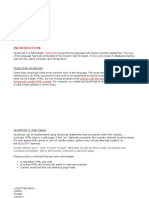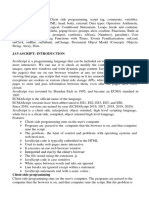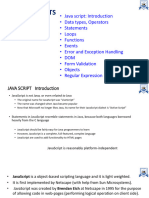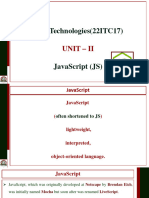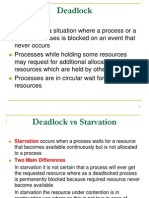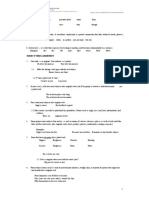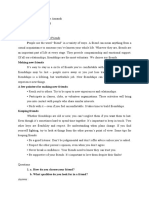0% found this document useful (0 votes)
68 views55 pagesJavascript
JavaScript is a scripting language used to make webpages interactive. It allows adding dynamic and interactive effects to websites. Some key points:
- JavaScript code can be added between HTML tags, in external .js files, or in the head/body of an HTML document.
- Common uses of JavaScript include form validation, dynamic content display, popup windows, and clocks.
- It is an interpreted language, meaning code is executed line by line without compilation.
- Variables, functions, objects, and arrays are the basic units of JavaScript programs. Code is organized using blocks delimited by curly braces.
- JavaScript supports common programming constructs like if/else statements, loops, functions, and return
Uploaded by
pptdownload81Copyright
© © All Rights Reserved
We take content rights seriously. If you suspect this is your content, claim it here.
Available Formats
Download as PPTX, PDF, TXT or read online on Scribd
0% found this document useful (0 votes)
68 views55 pagesJavascript
JavaScript is a scripting language used to make webpages interactive. It allows adding dynamic and interactive effects to websites. Some key points:
- JavaScript code can be added between HTML tags, in external .js files, or in the head/body of an HTML document.
- Common uses of JavaScript include form validation, dynamic content display, popup windows, and clocks.
- It is an interpreted language, meaning code is executed line by line without compilation.
- Variables, functions, objects, and arrays are the basic units of JavaScript programs. Code is organized using blocks delimited by curly braces.
- JavaScript supports common programming constructs like if/else statements, loops, functions, and return
Uploaded by
pptdownload81Copyright
© © All Rights Reserved
We take content rights seriously. If you suspect this is your content, claim it here.
Available Formats
Download as PPTX, PDF, TXT or read online on Scribd
/ 55















